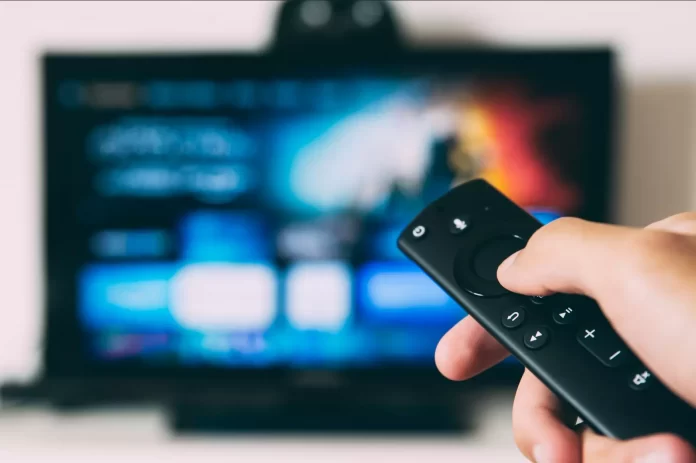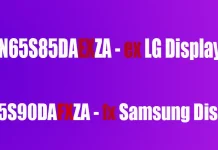Sony Smart TVs are some of the most popular TVs on the market. They compete with TV industry giants like Samsung, LG, Philips, and others. And there’s a reason for that. After all, smart TVs from Sony have the same features that make it easier and better to watch your favorite movies, TV shows, or sports events. Of course, there are no perfect TVs, but Sony strives to make its technology close to the ideal. And they often succeed, as their customer confidence rating is quite high.
Nevertheless, in any Smart TV, there can be flaws and working points that the user does not understand. If you use your Sony Smart TV only to watch satellite channels, then you don’t need to switch between signal sources. However, if in addition to watching TV, you also sometimes like to play a game console, then there’s a problem. Well, let’s take a closer look at how to change an input source and get back to TV on your Sony Smart TV.
Why are Smart TVs so popular?
Ten years ago, to watch a movie or TV series on your TV, you had to plug in a DVD player and insert a disc. However, thanks to the Smart TV system, this is a thing of the past. Now viewers can connect their TV to the Internet, watch videos, pay for subscriptions to movie services and enjoy ad-free content.
Smart TV is an operating system integrated into your TV that provides access to the Internet. This means unlimited interaction with multimedia content, social networking, ordering goods and services, playing games, and controlling other “smart” devices. In short, a useful addition that turns an ordinary TV into a multimedia center.
Sony Smart TVs are running on Android TV, which is intuitive for most users of the platform. For example, you can easily install apps on Android TV using a smartphone. All menu icons are divided into three categories: recently viewed, applications, and games, which can be replenished with a huge amount of free software from Play Market. The main advantages are functionality, a wide range of features, and excellent compatibility with peripherals.
Read Also:
- How to turn off subtitles on Sony TV
- How to turn on Sony TV without remote
- How to turn on Demo Mode or Store Mode on Sony TV
How to change the input source on Sony Smart TV
Let’s imagine a situation where you’re playing Xbox, but you suddenly need to switch to another source to see something. For example, it could be a score in a game where your favorite team is playing. In that case, you can follow these instructions:
- First of all, press the “INPUT” button on your Sony Smart TV remote control.
- After that, the input source window will be displayed on your TV screen.
- Select one of the input sources you need using the arrow keys on your remote control.
- Finally, just confirm the selection by pressing the “Enter” button.
Once you have completed these simple steps, you will be able to change the input source on your Sony Smart TV. Moreover, if you want to get back to your satellite or cable TV, you can just press the “TV” button located near the arrow keys. It immediately switches the input source to the cable TV.
If your Sony Smart TV remote control is broken or you lost it, you can change the input source on your Sony TV without a remote control using the backside panel. As a last resort, you can try resetting your Sony Smart TV to factory settings if the source switching function doesn’t work.
Why are there so many ads on Sony Smart TV?
The fact that people are forced to watch commercials every half hour when watching cable TV can already be called commonplace and taken for granted. However, smart TVs are about more than just watching TV channels, and even the multimedia capabilities are not the main thing here.
You can turn a big LED screen into an alternative for smartphones, tablets, and laptops. You can safely watch YouTube, as well as download various applications of streaming services (for example, you can watch Hulu on your Sony Smart TV). In addition, you can surf the Internet using the browser, communicate on social networks and even play video games. You can do all this while lying in bed or on the couch and enjoying a high-quality picture.
Unfortunately, you can’t avoid the occasional advertisement. Just like on a smartphone screen or PC monitor. All this is not about display mode when TV brand advertising becomes particularly intrusive.
Moreover, there are two TV modes you didn’t know about – demonstration (exhibition) and home. The first option is used in stores that sell Smart TVs. Devices that work this way completely reset the photo and audio settings every 3-5 minutes and turn on commercials.
Where is better screen quality: on Sony TV or Samsung TV?
It’s not uncommon for customers to find that Samsung produces a better picture than Sony. This does happen – lately Samsung has been producing high-contrast models that easily outperform Sony. However, the latter still rehabilitate themselves with a quality anti-reflective filter and semi-gloss matrix coating, which improve the picture in different lighting conditions.
In terms of color rendering, both companies boast decent performance and richness of the image. In addition, they produce pretty good results in the ColorChecker color test, which consists of 24 patterns. In addition to contrast and color rendering, it’s very important to pay attention to the speed of motion transfer – very often this factor is decisive when buying a TV because slow motion transfer is always a variety of “lags”, plumes, shakes, and other things that significantly reduce the quality of the moving image.
Samsung produces quite good results in various motion speed tests, especially if you “play around” with the modes and choose the most suitable one for yourself.
Sony isn’t too different from Samsung in this matter, as it produces almost the same results in the same type of tests. However, if you select the “Pulse” mode, you can achieve the maximum number of lines in fast-moving images.
Some models show an even more thorough approach to the issue – for example, Sony KDL TVs have a “Football Match” mode, which not only improves picture quality but also allows you to recreate the atmosphere of the stadium at home. This works especially cool with the ESPN app, which you can install on your Sony Smart TV including.
Read Also:
- Who owns Sony? Is Sony still a Japanese company?
- How to pair Sony Bluetooth headphones
- How to watch Paramount Plus on Sony Smart TV
What is OLED on Sony Smart TV?
The matrix of the new BRAVIA OLED TVs contains more than 8 million working pixels – 3840 horizontally and 2160 vertically. Well, there’s probably no need to explain the benefits of higher resolution Ultra HD – this is the resolution of the image projected on the huge screens in commercial cinemas.
Secondly, the extended dynamic brightness range – HDR. The benefits of this technology are not fully understood, and due to the similarity of the acronyms, it’s often confused with HDR in photography. There, by combining images with different exposures in the same picture, all parts of the frame are rendered with the same brightness level. It is more of compression, that is, range compression, as the range of brightness of the image itself doesn’t change.
HDR works differently on video, the point is that the display now shows a wider range of brightness – much closer to the natural one, perceived by our eyes. This makes it possible to display the finest details and color shades, both in the bright areas of the frame and in the shadows. Gradations of color used to be lost in a flat “fill” or “backlighting” because the old displays technically couldn’t work out such subtle transitions and gradations of light and shadow. BRAVIA OLED A1 Series TVs also have support for Dolby Vision HDR format.






